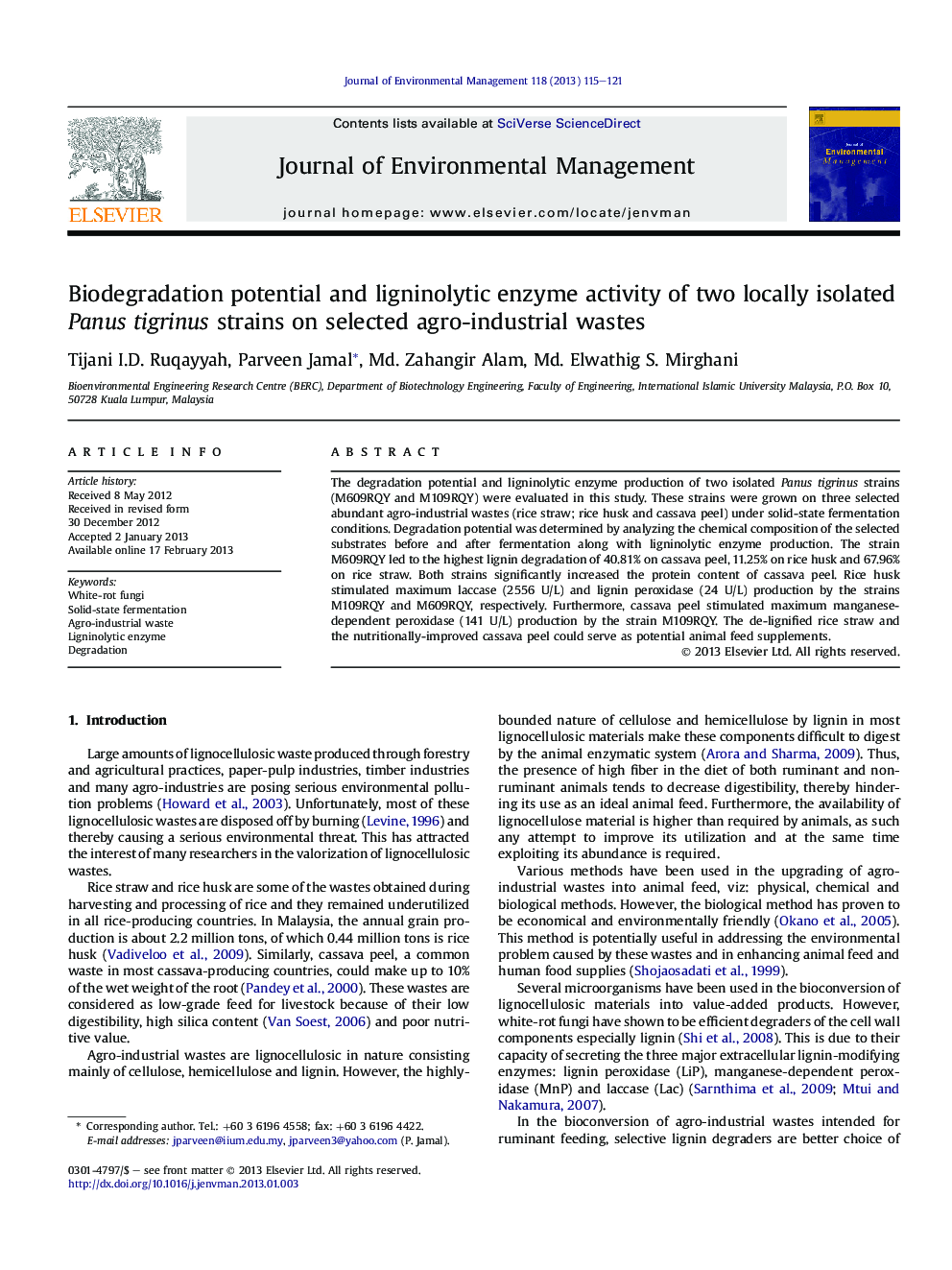| Article ID | Journal | Published Year | Pages | File Type |
|---|---|---|---|---|
| 1056461 | Journal of Environmental Management | 2013 | 7 Pages |
The degradation potential and ligninolytic enzyme production of two isolated Panus tigrinus strains (M609RQY and M109RQY) were evaluated in this study. These strains were grown on three selected abundant agro-industrial wastes (rice straw; rice husk and cassava peel) under solid-state fermentation conditions. Degradation potential was determined by analyzing the chemical composition of the selected substrates before and after fermentation along with ligninolytic enzyme production. The strain M609RQY led to the highest lignin degradation of 40.81% on cassava peel, 11.25% on rice husk and 67.96% on rice straw. Both strains significantly increased the protein content of cassava peel. Rice husk stimulated maximum laccase (2556 U/L) and lignin peroxidase (24 U/L) production by the strains M109RQY and M609RQY, respectively. Furthermore, cassava peel stimulated maximum manganese-dependent peroxidase (141 U/L) production by the strain M109RQY. The de-lignified rice straw and the nutritionally-improved cassava peel could serve as potential animal feed supplements.
► Degradation of three selected agro-industrial wastes by Panus tigrinus was achieved. ► Panus tigrinus secreted lignin peroxidase on the selected agro-industrial wastes. ► High bio-delignification (67.96%) of rice straw was obtained. ► Cassava peel served as a cheap substrate for MnP production. ► Rice husk and cassava peel served as potential substrates for production of laccase.
